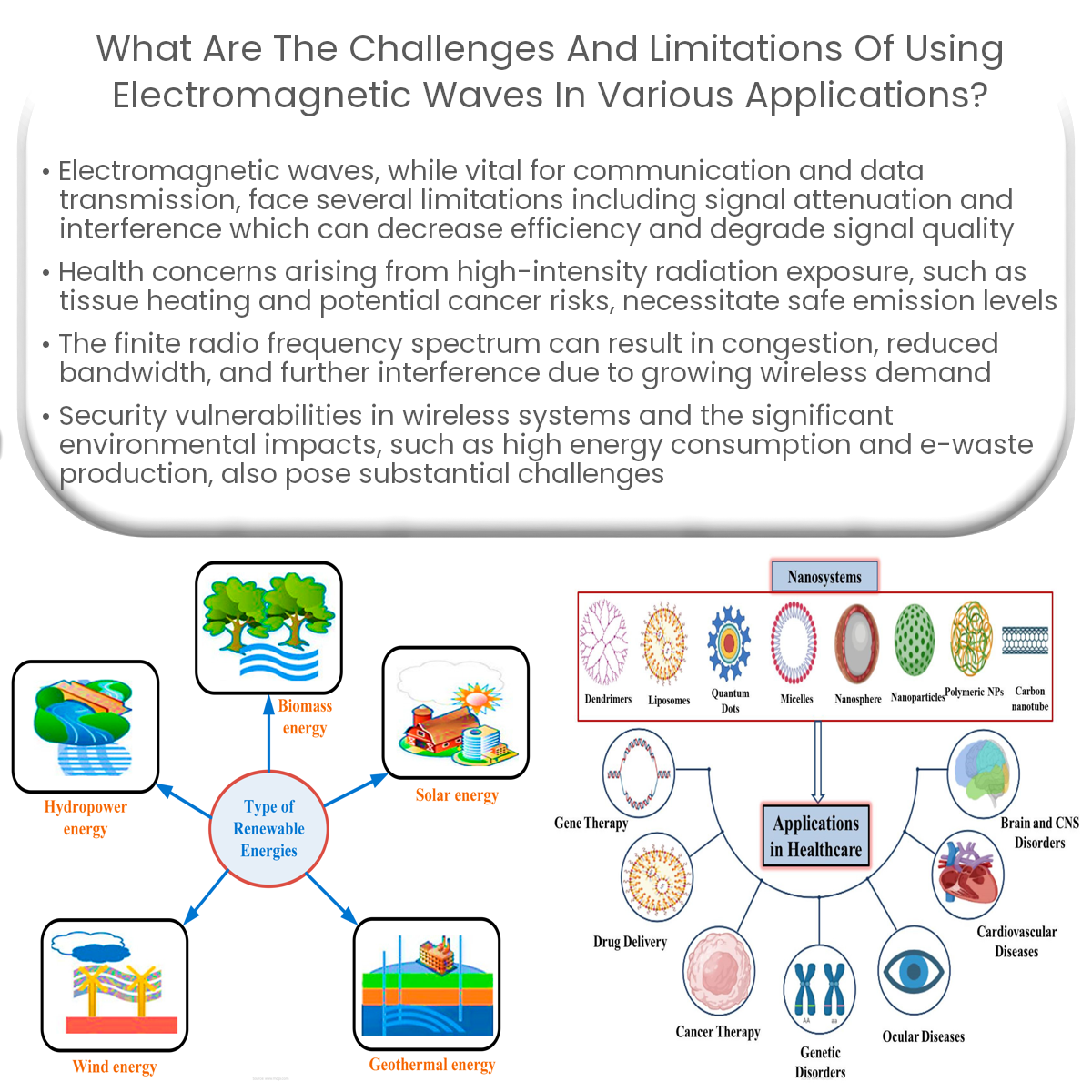Electromagnetic wave challenges include signal attenuation, interference, health concerns, limited frequency spectrum, security issues, and environmental impact.
Challenges and Limitations of Using Electromagnetic Waves in Various Applications
Electromagnetic waves have revolutionized the way we communicate, transmit information, and perform various tasks in our daily lives. Despite their numerous benefits, there are also several challenges and limitations associated with the use of these waves in various applications. This article discusses the main issues faced by industries and researchers when employing electromagnetic waves.
1. Signal Attenuation and Interference
- Attenuation: As electromagnetic waves travel through a medium, their strength decreases due to absorption, scattering, and reflection. This phenomenon, known as attenuation, limits the range and efficiency of communication systems that rely on these waves.
- Interference: Electromagnetic waves can interfere with one another when they encounter other waves of similar frequencies. This can cause a degradation of the signal quality, making it difficult to transmit and receive information accurately.
2. Health Concerns
- Exposure to high-intensity electromagnetic radiation can have adverse effects on human health. These effects may include tissue heating, nerve stimulation, and potential carcinogenic risks. Therefore, it is crucial to ensure that the levels of electromagnetic radiation emitted by devices are within safe limits.
3. Limited Frequency Spectrum
The radio frequency spectrum is a limited resource, and the ever-increasing demand for wireless communication and data transmission results in spectrum scarcity. This challenge can lead to congestion, reduced bandwidth, and increased interference in the communication channels.
4. Security Concerns
- Wireless communication systems that rely on electromagnetic waves are vulnerable to various security threats, such as eavesdropping and hacking. To ensure the integrity and privacy of the transmitted data, it is vital to implement robust security measures and encryption techniques.
5. Environmental Impact
- Energy consumption: The transmission and reception of electromagnetic waves consume a significant amount of energy. This can contribute to increased greenhouse gas emissions and exacerbate climate change.
- E-waste: The rapid technological advancements and the resulting short lifespan of electronic devices have led to a surge in electronic waste. Proper disposal and recycling of these devices are essential to minimize their environmental impact.
In conclusion, while electromagnetic waves have transformed various aspects of our lives, it is essential to address the challenges and limitations associated with their use. Focusing on the development of new technologies and strategies to mitigate these issues will ensure the continued growth and success of applications that rely on electromagnetic waves.


